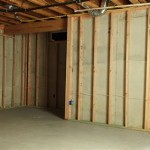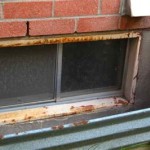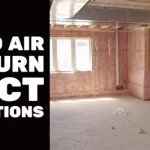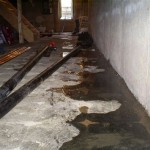How to Vent a Dryer in a Basement
Venting a clothes dryer in a basement is a crucial task for ensuring the proper operation and safety of the appliance. Effective ventilation allows moisture and heat produced during the drying process to escape, preventing condensation, mold growth, and potential fire hazards. Here's a comprehensive guide on how to vent a dryer in a basement:
1. Choose the Right Vent:
Select a rigid metal or flexible aluminum vent, ensuring it is compatible with your dryer model and meets building codes. Rigid metal vents are more durable but require precise planning and installation, while flexible aluminum vents are easier to maneuver but less resistant to crushing.
2. Determine the Vent Path:
Identify the most direct path from the dryer to the outside. Check for obstacles such as joists, plumbing pipes, or electrical wires that may hinder the vent's installation. If possible, avoid excessive bends or kinks in the vent line.
3. Plan the Vent Opening:
Locate a suitable spot on an exterior wall or roof that provides unobstructed airflow. Drill a 4-inch hole or use an existing vent opening. Install a dryer vent hood or cap to cover the opening and prevent rain or pests from entering.
4. Install the Vent Elbow:
Attach a 90-degree elbow to the dryer exhaust port to redirect the vent towards the wall or roof opening. Secure the elbow with a metal clamp or duct tape.
5. Connect the Dryer Vent:
Insert the vent into the elbow, ensuring a snug fit. Secure the connection with metal clamps or duct tape at both ends. Run the vent along the planned path, using additional elbows or connectors as needed.
6. Avoid Sharp Bends:
Maintain a gentle curve in the vent line to prevent airflow restrictions. Avoid sharp bends or crimps that could hinder the dryer's ability to exhaust moisture and heat effectively.
7. Support the Vent:
Use metal brackets or straps to support the vent where it crosses joists or other obstacles. Ensure the vent is secure and does not sag or vibrate during operation.
8. Seal the Joints:
Seal all connections between the vent and fittings using duct tape or metal foil tape. This prevents air leaks that could reduce the dryer's efficiency or introduce moisture into the basement.
9. Install a Backdraft Damper:
Consider installing a backdraft damper in the vent line to prevent cold air or outdoor odors from entering the dryer when it is not in operation. This helps maintain indoor air quality and prevent condensation.
10. Test the Vent:
Once the vent is installed, run the dryer and check for proper airflow. Ensure the vent is not blocked or restricted and that moisture is expelled through the exterior vent opening. If any issues arise, inspect the vent for potential clogs or leaks.

Dryer Vent Through Cinder Block And Then Yard Is This Ok Home Improvement Stack Exchange

How To Vent A Dryer In The Basement

How To Vent A Dryer In The Basement

How To Vent A Clothes Dryer Ask This Old House Youtube

Venting Of Laundry Room Canadian Home Inspection Services

Hvac Talk Heating Air Refrigeration Discussion

How To Vent A Dryer In The Basement

Dryer Vent In Basement Window

Window Dryer Vent Exhaust Works

Dryer Vent Best Practices







